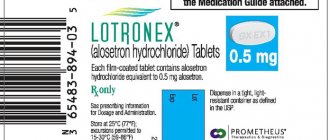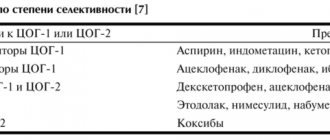Trinalgin solution for intravenous and intramuscular injection 5 ml amp/pack cards x5
ATX code: N02BB52 (Metamizole sodium in combination with other drugs (excluding psycholeptics)) Active substances metamizole sodium Rec.INN WHO registered pitofenone Rec.INN WHO registered fenpiverinium bromide Rec.INN WHO registered Dosage form TRINALGIN solution for intravenous and intramuscular administration 500 mg + 2 mg + 0.02 mg: 2 ml or 5 ml amp. 5 or 10 pcs. reg. No.: LP-001826 dated 09/10/12 - Valid Release form, composition and packaging Solution for intravenous and intramuscular administration, white, round, flat, with cut edges and a dividing groove.
1 ml metamizole sodium 500 mg pitofenone hydrochloride 2 mg fenpiverinium bromide 0.02 mg
Excipients: sodium disulfite 1 mg, sodium hydroxide solution 2 M sufficient to bring the pH to 6.0-7.5, water for up to 1 ml.
2 ml - light-protective glass ampoules (10) - cardboard boxes. 2 ml - light-protective glass ampoules (5) - contour cell packaging made of polyvinyl chloride film (1) - cardboard packs. 2 ml - light-protective glass ampoules (5) - contour cell packaging made of polyvinyl chloride film (2) - cardboard packs. 5 ml - light-protective glass ampoules (5) - contour cell packaging made of polyvinyl chloride film (1) - cardboard packs. 5 ml - light-protective glass ampoules (5) - contour cell packaging made of polyvinyl chloride film (2) - cardboard packs.
Clinical-pharmacological group: Spasmoanalgesic Pharmaco-therapeutic group: Analgesic non-narcotic drug (non-narcotic analgesic + antispasmodic) Pharmacological action Combined analgesic and antispasmodic drug, the combination of drug components leads to a mutual enhancement of their pharmacological action.
Metamizole sodium is a pyrazolone derivative that has an analgesic and antipyretic effect.
Pitophenone hydrochloride has a direct myotropic effect on smooth muscles (papaverine-like effect).
Phenpiverinium bromide has an m-anticholinergic effect and has an additional myotropic effect on smooth muscles. Indications Pain syndrome (mild or moderately severe) with spasms of smooth muscles of internal organs: renal colic, spasm of the ureter and bladder, biliary colic, intestinal colic, biliary dyskinesia, postcholecystectomy syndrome, chronic colitis, algodismenorrhea, diseases of the pelvic organs.
For short-term treatment: arthralgia, myalgia, neuralgia, sciatica.
As an auxiliary drug: pain syndrome after surgical interventions and diagnostic procedures. ICD-10 codes ICD-10 code Indication K80 Gallstone disease [cholelithiasis] (including hepatic colic) K82.8 Other specified diseases of the gallbladder and cystic duct (including dyskinesia) K91.5 Postcholecystectomy syndrome M25. 5 Joint pain M54.3 Sciatica M54.4 Lumbago with sciatica M79.1 Myalgia M79.2 Neuralgia and neuritis, unspecified N23 Renal colic, unspecified N94.4 Primary dysmenorrhea N94.5 Secondary dysmenorrhea R10.4 Other and unspecified pain in the abdominal area ( colic) R51 Headache R52.0 Acute pain R52.2 Other persistent pain (chronic)
Dosage regimen: Orally: adults and adolescents over 15 years of age: 1-2 tablets. 2-3 times a day, without chewing, with a small amount of liquid.
Children 12-14 years old: single dose - 1 tablet, maximum daily dose - 6 tablets. (1.5 tablets 4 times/day), 8-11 years old - 0.5 tablets, maximum daily dose - 4 tablets. (1 tablet 4 times/day), 5-7 years - 0.5 tablets, maximum daily dose - 2 tablets. (0.5 tablet 4 times/day).
Parenterally (i.v., i.m.).
For adults and adolescents over 15 years of age with acute severe colic, 2 ml are administered intravenously slowly (1 ml over 1 minute), if necessary, re-injected after 6-8 hours. IM - 2-5 ml of solution 2-3 times/day The daily dose should not exceed 10 ml. The duration of treatment is no more than 5 days.
Dose calculation for children with IV and IM administration: 3-11 months (5-8 kg) - only IM - 0.1-0.2 ml, 1-2 years (9-15 kg) - IV - 0.1-0.2 ml, IM - 0.2-0.3 ml, 3-4 years (16-23 kg) - IV - 0.2-0.3, IM - 0.3-0.4 ml, 5-7 years (24-30 kg) - IV - 0.3-0.4 ml, IM - 0.4-0.5 ml, 8-12 years (31-45 kg) - IV - 0.5-0.6 ml, IM - 0.6-0.7 ml, 12-15 years - IV and IM - 0.8-1 ml.
Before administering the injection solution, it should be warmed in your hand. Side effects Allergic reactions: urticaria (including on the conjunctiva and mucous membranes of the nasopharynx), angioedema, in rare cases - malignant exudative erythema (Stevens-Johnson syndrome), toxic epidermal necrolysis (Lyell's syndrome), bronchospastic syndrome, anaphylactic shock .
From the urinary system: impaired renal function, oliguria, anuria, proteinuria, interstitial nephritis, red staining of urine.
From the cardiovascular system: decreased blood pressure.
From the hematopoietic system: thrombocytopenia, leukopenia, agranulocytosis (may be manifested by the following symptoms: unmotivated rise in temperature, chills, sore throat, difficulty swallowing, stomatitis, as well as the development of vaginitis or proctitis).
Anticholinergic effects: dry mouth, decreased sweating, accommodation paresis, tachycardia, difficulty urinating.
Local reactions: with intramuscular injection, infiltrates are possible at the injection site. Contraindications for use Hypersensitivity (including to pyrazolone derivatives), inhibition of bone marrow hematopoiesis, severe hepatic and/or renal failure, glucose-6-phosphate dehydrogenase deficiency, tachyarrhythmias, severe angina pectoris, decompensated chronic heart failure, angle-closure glaucoma, prostatic hyperplasia (with clinical manifestations), intestinal obstruction, megacolon, collapse, pregnancy (especially in the first trimester and the last 6 weeks), lactation.
For intravenous administration - infancy (up to 3 months) or body weight less than 5 kg. For tablets - children's age (up to 5 years).
With caution: renal/liver failure, bronchial asthma, tendency to arterial hypotension, hypersensitivity to NSAIDs, urticaria or acute rhinitis caused by taking acetylsalicylic acid or other NSAIDs.
Use during pregnancy and breastfeeding Contraindicated during pregnancy (especially in the first trimester and the last 6 weeks).
Use in nursing mothers requires cessation of breastfeeding.
Use for liver dysfunction Contraindicated in severe liver failure. With caution: moderate or mild liver failure. Use for impaired renal function. Contraindicated in cases of severe renal failure. With caution: moderate or mild renal failure Use in children Contraindications for intravenous administration - infancy (up to 3 months) or body weight less than 5 kg, for tablets - children's age (up to 5 years).
Treatment of children under 5 years of age should only be carried out under medical supervision.
Special instructions During treatment with the drug, it is not recommended to take ethanol.
With long-term (more than a week) treatment, monitoring of the peripheral blood picture and the functional state of the liver is necessary.
If agranulocytosis is suspected or thrombocytopenia is present, the drug should be discontinued.
It is not permissible to use it to relieve acute abdominal pain (until the cause is determined).
Intolerance is very rare, but the risk of developing anaphylactic shock after intravenous administration of the drug is relatively higher than after taking the drug orally. Patients with atopic bronchial asthma and hay fever have an increased risk of developing allergic reactions.
Parenteral administration should be used only in cases where oral administration is not possible (or absorption from the gastrointestinal tract is impaired). Special caution is required when administering more than 2 ml of solution (risk of a sharp decrease in blood pressure). The IV injection should be carried out slowly, in the “lying” position and under the control of blood pressure, heart rate and respiratory rate.
When treating children under 5 years of age and patients receiving cytostatics, metamizole sodium should only be taken under medical supervision.
For intramuscular administration it is necessary to use a long needle.
It is possible that the urine may turn red due to the release of a metabolite (it has no clinical significance).
Impact on the ability to drive vehicles and operate machinery
During treatment, drivers of vehicles and persons engaged in potentially hazardous activities that require quick physical and mental reactions should be careful.
Overdose Symptoms: vomiting, decreased blood pressure, drowsiness, confusion, nausea, pain in the epigastric region, impaired liver and kidney function, convulsions.
Treatment: gastric lavage, administration of activated carbon, symptomatic therapy. Drug interactions The solution for injection is pharmaceutically incompatible with other drugs.
When combined with histamines and H1-blockers, butyrophenones, phenothiazines, tricyclic antidepressants, amantadine and quinidine, the m-anticholinergic effect may be enhanced.
Enhances the effects of ethanol; simultaneous use with chlorpromazine or other phenothiazine derivatives can lead to the development of severe hyperthermia.
Tricyclic antidepressants, oral contraceptives and allopurinol increase the toxicity of the drug.
Phenylbutazone, barbiturates and other liver enzyme inducers, when administered simultaneously, reduce the effectiveness of metamizole sodium.
Sedative and anxiolytic drugs (tranquilizers) enhance the analgesic effect of metamizole sodium.
Radiocontrast drugs, colloidal blood substitutes and penicillin should not be used during treatment with drugs containing metamizole sodium.
With simultaneous administration of cyclosporine, the concentration of the latter in the blood decreases.
Metamizole sodium, displacing oral hypoglycemic drugs, indirect anticoagulants, corticosteroids and indomethacin from protein binding, can increase the severity of their action.
Thiamazole and cytostatics increase the risk of developing leukopenia.
The effect is enhanced by codeine, H2-histamine receptor blockers and propranolol (slows down the inactivation of metamizole sodium).


